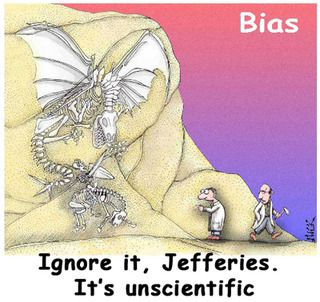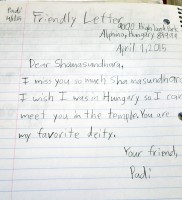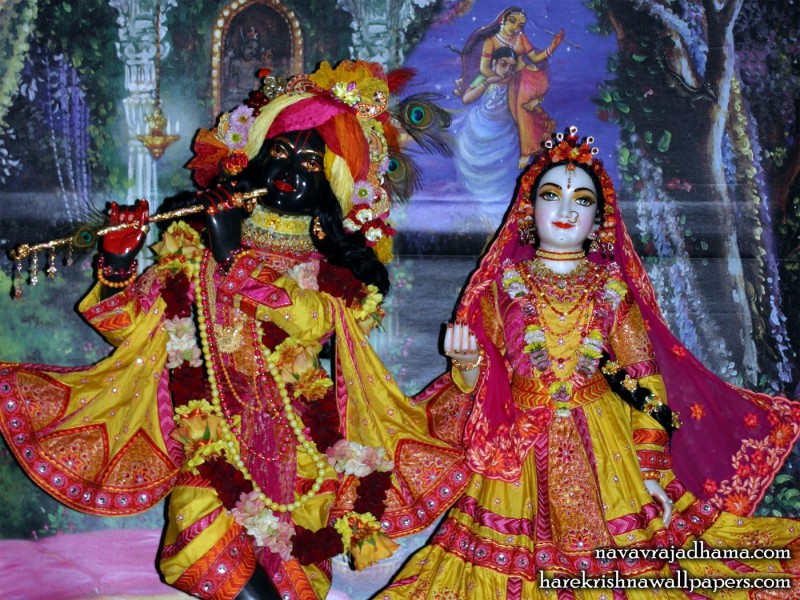BY MATHURA LILESVARI DEVI DASI
ORIGINAL ARTICLE

Hema with her teammates at the award ceremony
KUALA LUMPUR - It was indeed a proud moment last Friday, 27 March 2015 at the Inter-Continental Hotel, Kuala Lumpur when the Malaysia Law Awards for the Best Insurance In-House Team of the Year was conferred to a team from Sun Life Malaysia Assurance Berhad, a 49% subsidiary of Sun Life Financials of Canada. This team of lawyers is led by Sun Life’s General Counsel, Hema Latha Sinnakaundan or better known in the devotee circle as Hema Kanti Devi Dasi, a disciple of HH Jayapataka Swami. Hema was nominated as the Best In-House Lawyer at the awards.
The award was especially sweet, significant and inspiring because Hema who was introduced to ISKCON at the age of 8 grew up in ISKCON, in the temple. Hema remembers waking up as early as 4am every day in order to take turns with her brother Raj Kumar in performing mangal arati at home which will be followed by reading from the Bhagavad Gita and the Nectar of Devotion, before they get ready to go to school. Memorizing Sanskrit slokas at a young tender age helped Hema develop a strong memory power which helped her do well in her studies.

Hema in her school uniform with the temple matajis
Hema was only 10 when her mum, a single parent decided to send Hema’s brother to the Vrindavan Gurukula and move in to the local ISKCON temple together with Hema, as a full time devotee taking on deity and cooking services. Her mother, Danistha Devi Dasi however was clear that besides being trained in Krsna Consciousness, Hema has to be educated materially as well. Hema was known in school as the Hare Krsna girl. The Hare Krsna girl that later become the head prefect of the school. Leadership qualities were clearly inborn. Hema would go to school after attending mangal arati at the temple and she would not be shy to put on her tilak and even hand over devotional cassettes to her school bus driver and have the whole bus ride to school listening to tunes of the Maha Mantra.
While staying in the temple, Hema was responsible for a set of duties which included plucking Tulasi leaves and flowers, making Tulasi garlands and flower garlands for the deities, polishing the arati paraphernalia, sweeping and cleaning the temple hall, etc. She was also very active in stage shows during ISKCON festivals. These services helped in developing her sense of responsibility, her confidence level and self-esteem at a young age, which came in very handy during her court going days and currently in her boardroom and corporate days.

Hema Kanti Devi Dasi receiving blessings from HH Jayapataka Swami
At 14, Hema and mum moved in with her uncle Deva Deva Raj Das and maternal aunt Sakhya Rasa Devi Dasi, also disciples of HH Jayapataka Swami where she was further trained in Krishna Consciousness together with her material education. Her ability to always question and debate made a clear indication that law should be her career choice. Hema too was very much interested in reading law and pursued to do so upon completing her high school. Her uncle, who was her father figure, was her source of inspiration and support throughout her high school and college years and became her biggest cheerleader as she progressed in life, until he left his body 9 years ago. Now Hema is a source of inspiration and support to his 2 daughters, Gandharvika Radharani Devi Dasi (a disciple of Jayapataka Swami) and Archanna Devarajan.
When her family and she visited Shri Dham Mayapur for Srila Prabhupada’s Centennial Celebrations in 1996, Hema was formally initiated into the family of Srila Prabhupada by HH Jayapataka Swami. She was 21. She was an inspiration to many youths at that time to take Krsna Consciousness seriously being amongst the first of them to receive initiation.

Little Hema with the mrdanga
Hema qualified as an Advocate & Solicitor of the High Court of Malaya and was a court going lawyer in Kuala Lumpur for 3 years before moving on to London, United Kingdom to gain more experience and exposure in the UK courts of law. In London, the law firm that she practiced in was a stone throw away from the ISKCON SOHO temple, where she used to frequent during her lunch breaks and after working hours. In London, she qualified as a Solicitor of the Court of England & Wales and after a brief stint in the Financial Services Authority of England, Hema moved back to Kuala Lumpur to have her first child, Veyniesha. It was in Malaysia where she climbed the corporate ladder to where she is right now. She now heads a team of 3 lawyers, 5 compliance officers and 3 corporate secretaries in providing legal, compliance and corporate secretarial services to Sun Life Assurance Malaysia Berhad. Her recent achievements in 2014 was duly recognised by Asian Legal Business.
Sun Life Malaysia was scarce of an in-house Legal Department when Hema joined. Hema got in the right people, set up of the department while building a good repertoire between the team and all other divisions of the company, the Regional Office of the company in Hong Kong and the Corporate Office of the company in Canada. She is the main liaison person between the company and its regulator, the Central Bank of Malaysia. Seeing her calibre in managing the Legal Department, she was given 2 other departments to head simultaneously. She is also part of the management committee and it is a must mention that she is the youngest member of this committee. Hema was also the youngest nominated in-house lawyer at the ALB Malaysia Law Awards.

Hema would never neglect her chanting of the HareKrsna MahaMantra daily
Hema says, “I ensured that my team members, alongside their daily responsibilities, received continuous training in order to develop and enhance their talent and capabilities. The concept of ‘I, me, and myself’ is non-existing in my team as we vouch for each other and ensure that we swim and steadily keep each other afloat together, as a team. I learnt this concept through my wonderful up-bringing in ISKCON. My gurumaharaj and our stalwart ISKCON leaders have always demonstrated wonderful leadership qualities that we can all emulate alongside a great showcase of teamwork. I did nothing but only followed in their footsteps and it worked tremendously well for me. I believe that following the leadership style of Srila Prabhupada and his disciples would benefit leaders in any level or field. I pray that I can also use these skills that I have developed to help push forward the teachings of Lord Caitanya to people at large.”
The Malaysia Law Awards is organised by the Asian Legal Business (ALB) which is owned by Thomson Reuters, the world’s leading source of intelligent information for businesses and professionals. With its portfolio of leading titles, online services, law awards and in-house legal summits, ALB provides authoritative and unbiased insights and unmatched networking and business development opportunities to legal professionals throughout the Asia-Pacific and the Middle East regions. It’s Law Awards are held in various countries such as Singapore, China, Malaysia, Korea and Japan. The judging panel consists of the general and the special expertise panels. It is composed of approximately 30 reputable members from the legal academe, in-house teams, law firms, legal associations or business leagues, whose identities are kept confidential prior to the awarding ceremony.
Hema is also an enthusiastic mother of three beautiful girls Veyniesha, Atmikhaa and Amrithaa. Together with her loving and supportive husband Ramesh Balakrishnan, Hema Kanti juggles between giving the girls Krishna Conscious education while ensuring they have what it needs to survive in this very demanding material world. Her mother, maternal aunts and brother, Danistha Devi Dasi Sakhya Rasa Devi Dasi, Niladevi and Raj Kumar are her pillars of strength while pleasing her spiritual master, HH Jayapataka Swami is the main and sole purpose of her life. We wish Hema all the best and hope that more and more youths are inspired by her success. Hema is another living proof that we Hare Krishnas not only sing and dance in airports but can also roar in the court house!


























